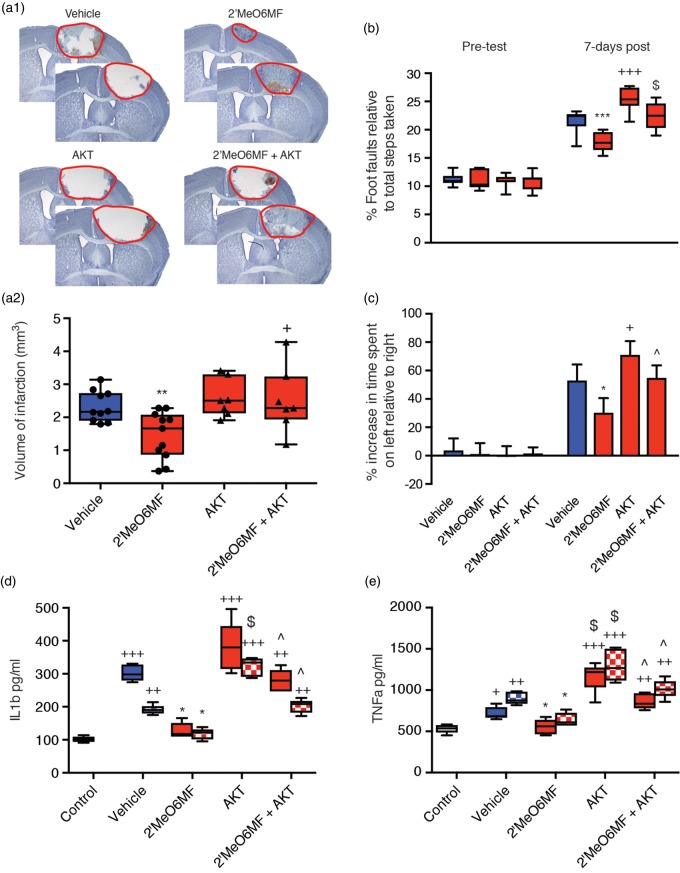Figure 7.
The pan-AKT inhibitor prevents 2′MeO6MF from affording protection and functional recovery. Assessment of infarct volume seven days post-stroke revealed that treatment with 2MeO6MF (30 mg/kg i.p.) resulted in a significant decrease in infarction (n = 7) compared to stroke + vehicle (n = 7 (a)). Treatment with the pan-AKT inhibitor, GSK690693 (30 mg/kg i.p) given 1 h post-stroke with a second dose at 24 h, resulted in a small increase in infarct volume (n = 7) compared to vehicle-treated controls, and when administered at the same time as 2′MeO6MF completely blocked 2′MeO6MF protective effects (n = 7). Functional recovery was assessed using behavioural measurements of forelimb functions (gridwalking (b)) and forelimb asymmetry (cylinder task (c)). Treatment with 2′MeO6MF resulted in a significant improvement in functional recovery on the gridwalking task (b) and in the cylinder task (c). Co-administration of GSK690693 with 2′MeO6MF blocked the 2′MeO6MF-mediated functional recovery on both the gridwalking (b) and cylinder (c) tasks. Animals treated with GSK690693 alone performed significantly worse on both the gridwalking (b) and cylinder (c) tasks compared to stroke + vehicle controls. Assessment of circulating cytokine levels revealed that treatment with 2′MeO6MF decreased both IL-1β (d) and TNF-α (e) levels, one day (solid bars) and three days (chequered bars) post-stroke. Treatment with GSK690693 completely blocked the effects of 2′MeO6MF and when administered alone resulted in a significant increase in circulating IL-1β (d) and TNF-α (e) levels, one and three days post-stroke. All data are presented as mean ± SD. + =P < 0.05, ++=P < 0.01 and +++=P < 0.001 compared with sham + vehicle-treated controls; *=P < 0.05, **=P < 0.01 and ***=P < 0.001 compared with stroke + vehicle-treated controls; ^=P<0.05 and $=P < 0.001 compared with time-matched stroke + 2′MeO6MF treatment. 2′MeO6MF: 2′-methoxy-6-methylflavone.

